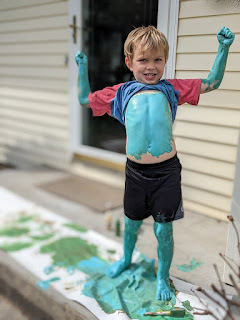Builders of Myths, Meaning, and Narratival Structures
Birds build nests.
Humans build houses.
We humans, the curious creatures we are, not only build homes for ourselves and our brood, but we also construct myths. We weave meaning-making tapestries. We build narratival structures to inhabit.
With our physical homes, we brave torrential downpours and icy blasts. We snuggle by the hearth and feast at the table. We gather around glowing pixels and hibernate under down comforters. Ideally, our homes provide dignity, security, safety, joy, identity. They root is in place. They provide rhythm for the rhyme of our come-and-go lives.
We also do this kind of construction with words, ideas, emotions, and mental maps. Yes, a physical home is not binary in its anthropological significance. Our houses are part of our meaning-making. In fact, we build spaces and then the architecture performs some sort of gymnastics by which it flips around and shapes us in turn.
But physical houses are not the focus of this post. Rather, I want to reflect upon an essential quality of humanity, as imago Dei, that really exists at the epicenter of the question, "What does it mean to be human?"
There is an unavoidable teleological quality to our humanity. We can't not build myths, meaning-making frameworks, and narratival structures.
It's been said that words create worlds. Indeed, former generations typically bequeath these myths to their progeny. Much ink has been spilled over the past half a millennia about undoing, questioning, or rewriting the myths and narratives passed down to us. The scope of that cultural project, particularly in 'Western' society, is beyond my capacity to exegete in a blog post. The point remains, though: for 'neuro-typical' humans who have their faculties, we can't not build myths and narratives. As psychologist and holocaust survivor Viktor Frankl astutely observes in his famed title, we are all on the "search for meaning."
These structures are not only ones we build for survival, but for hope. These structures must not only withstand the stress and strain of suffering, evil, injustice, and mystery, but also the groundswell of hopes, longings, dreams, and affections that arise from subterranean depths. We don't need to do any fracking to know that there are geothermal pressures shooting up from within our souls.
Does the myth you inhabit have the internal strength to withstand these pressures? What happens when tragedy strikes? When injustice or trauma comes knocking on your door?
Joseph Campbell argues that myths are 'lies' we tell to reveal the truth. He suggests there are four layers to the myths we build: 1) Who is the divine? Who am I?); 2) What is the meaning of this life?; 3) How should we live?; and 4) How can I live again? C. S. Lewis, the brilliant early 20th century literary scholar at both Oxford and Cambridge, traveled from atheism to Christ after coming to the conclusion that Christianity is the only "true myth." In this sense of myth, we are all mythological beings.
Campbell says that our myths really meet their fate when crisis comes. When the flood waters roll in, will the narratival structures of hope we've built withstand the pressure? How do we actually go about interrogating the myths we've built? How do we know a myth is worth living in? How do we know if our meaning-making is worthy of our devotion? If we discover that our narratival structure is not built with indestructible hope, then what do we do? Where does a 'true myth' come from - and how do we inhabit such a framework with humility and perseverance? These are questions for further reflection.
One question which informs the stickiness of our myths and narratives we choose to inhabit surely must also include: What provides joy? Because let's be honest, we are happiness junkies. This was also part of Lewis' story; he found himself "surprised by joy." We surely choose to live in a narrative that will give us joy. We need a story to live within that provides existential survival, and also hope and of joy.
To bring this reflection to a close. Joy. I mean, look at that photo of my son. He started out painting a picture on the canvas and ended up painting his body - all in the pursuit of pure joy. Does the myth, or meaning-giving framework, or story structure you are living within have a telos of joy?



Comments